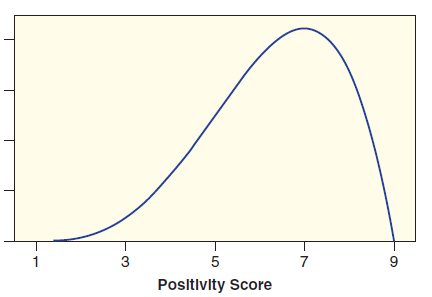Are natural languages neutrally, positively, or negatively biased? That is the question a recent study set out
Question:
 (a) Describe the shape of the distribution.
(a) Describe the shape of the distribution.
(b) Which of the following values is closest to the median of the distribution:

(c) Will the mean be smaller or larger than the value you gave for the median in part (b)?
Fantastic news! We've Found the answer you've been seeking!
Step by Step Answer:
Related Book For 

Statistics Unlocking The Power Of Data
ISBN: 9780470601877
1st Edition
Authors: Robin H. Lock, Patti Frazer Lock, Kari Lock Morgan, Eric F. Lock, Dennis F. Lock
Question Posted:





